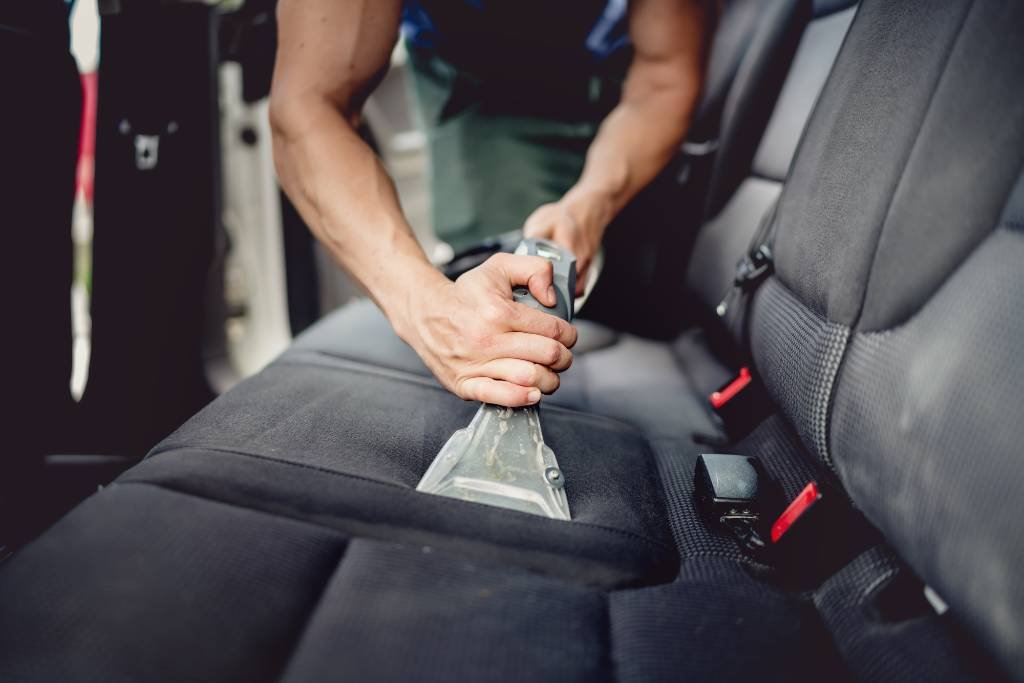Does your car smell foul and musty, like wet gym socks, sour milk, or rotten wood? Chances are, your car is infested with mold.
Mold thrives in the presence of higher temperatures and higher levels of moisture. Perhaps, you left the windows open and it rained. Maybe you spilled something or left wet clothing or towels inside. It could also be caused by washing your interior carpets and car seat covers without fully drying them out.
Unfortunately, a mold is more than just a smelly and unsightly problem – it’s a major dilemma that can be harmful to one’s health. Exposure to mold could cause skin and respiratory irritation and is even more detrimental to people with asthma, allergies, and weaker immune systems.
If you have already developed mold problems in your car, don’t worry – help is on the way. This guide is here to educate you about what you can do to get rid of mold and prevent it from coming back.
1. Protect Yourself First
Safety first. You’ll be exposed to possible toxins, so make sure to wear a surgical face mask or a particle mask, and thick, non-porous household cleaning gloves.
2. Air it out in a sunny spot
Sunlight and fresh air are effective tools for fighting mold. These dry the dampness out and make it impossible for mold to survive.
Move your car to a sunny parking lot. Open all the doors, windows, and sunroof (if you have one) and let the car fully aired out. Leave them open for 15 minutes to allow the mold spores to blow out and get rid of the bad odor.
3. Run a thorough inspection
Look for the main source to know where you need to focus your cleaning efforts. Inspect the floor or carpet, the surface of the seats, underneath the seats, and seat lining and side seams. Check the steering wheel and seat belts too.
In case you’re unsure of what mold looks like, here’s a cheat sheet: They may be brown, white, black, gray, or green, and are usually in small, circular patches.
4. Break up the mold
Before disinfecting, try to break up the patches or large clusters of the mold with a toothbrush.
Use gentle strokes to prevent spreading the spores. Brush into the cracks and crevices over and under the seats and surfaces. If you’re lucky to have a wet-dry vacuum cleaner, you may vacuum up all the loose mold you’ve just brushed up.
5. Spray with homemade disinfectant solutions
You don’t have to look further – go to your kitchen and create disinfectants using vinegar and clove oil. Take out your car seat covers and carpets. Before washing them, disinfect them first with one of the following solutions:
– Vinegar solution – this is the most effective way to get rid of mold. Create a solution using 4 parts of white vinegar and 1-part water. For extreme cases of infestation, you may use undiluted vinegar. Pour the solution into a spray bottle and spray it on your upholstery, car seat covers and carpets. Spray other parts of your car too, including the interior walls, steering wheel, dashboard, and air vent. Let it sit for at least 20 minutes, or longer to fully kill the mold and stop its regrowth.
– Clove oil solution – You need one-quart water, ½ cup of white vinegar, 1 tablespoon of baking soda, and ¼ teaspoon of clove oil (note: avoid direct skin contact for they can irritate skin and mucous membranes. Follow the same instructions.
Don’t use bleach or ammonia-based products for these may stain or discolor your car seats, car seat covers, carpet, and your interior’s hard surfaces. They also won’t kill the mold.
6. Dry them out with the sun, air, and a vacuum cleaner
After spraying the mold with your liquid solution, leave the doors open to dry it up, preferably in direct sunlight with plenty of air circulation, to prevent moisture buildup.
Once it’s completely dry, vacuum over the seats and carpet to get rid of the dried-up mold residue. If you have a wet-dry vacuum cleaner, you may use this to dry the surfaces instantly.
7. Wash the car seat covers and carpets
After successfully killing the mold, it’s time to wash your seat covers and carpets. Use a standard detergent. If possible, include borax powder when washing them.
If you can’t use detergent for whatever reason, use a salt water solution. This is best for removing mold from soft items, like cloth car seat covers and carpets. You need a packet of non-iodized salt, a large bucket of water, and a soft brush. Brush or thoroughly spray the mixture over the area, let it dry in direct sunlight, and brush off and vacuum the dried salt crusts with mold particles.
8. Reinstall or replace seat covers and carpets
Confident they’re mold-free and all dried up? It’s time to reinstall them. For severe cases of mold, consider replacing them with new car seat covers and carpeting.
9. Use dehumidifiers and air fresheners
We’ve said this before, and we’ll say it again: Mold grows in a moist environment so make sure your car is kept totally dry to prevent mold from coming back.
While getting moist from rain or snow, sweating, and spilling liquids are inevitable, you can amp up your protection with dehumidifiers and desiccants. Often used interchangeably, dehumidifiers and desiccants help maintain humidity levels in the air and reducing dampness and musty smell.
Seal everything with a car air freshener. Car air fresheners work best for thoroughly-cleaned cars.
Rid Of Mold From Your Car Interior











